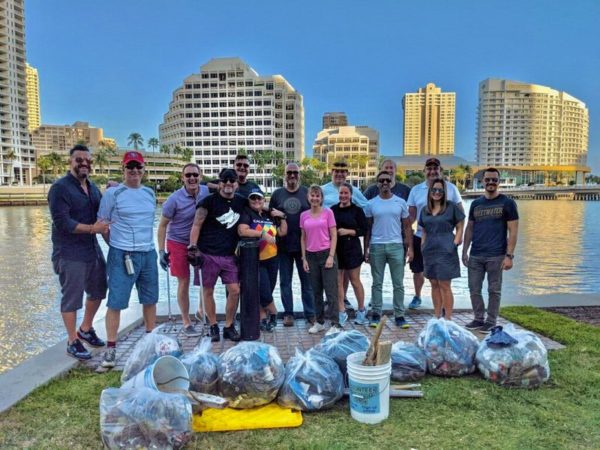Recently during an offsite leadership meeting, my colleagues and I participated in a volunteer activity—picking up trash along the shoreline.
We divided up into pairs and embarked on our mission. My “garbage buddy” and I, along with several other intrepid Buck garbage buddies bravely set off, equipped with garbage pails, gloves, garbage pickers, and our log sheets upon which to note what we found.
From our starting point, the rocky and mangrove-lined shoreline appeared relatively clean; hence, we all naively believed that our industrious group would be done in no time.
The last (plastic) straw: What should we really measure?
Upon closer inspection, though, the view quickly became disturbing. Empty drink containers were plentiful, unusual objects scattered about—a shoe, a sock, a baby harness, and wait, here’s a voodoo doll! But most troubling of all were the far-too-numerous to count bottle caps (plastic in almost all cases), straws (more plastic) and cigarette butts. Quickly, the task before us became overwhelming, and the notion of cataloguing and counting each type of item, pointless.
But the team assembled is a relentless bunch, and incredibly results motivated. Which is why, independently, each pair of garbage buddies quickly gave up on the cataloguing and went all in on collecting. By the end of our time-monitored effort, we’d collected 200 pounds of trash: more than 13 pounds of trash per person in 45 minutes—that’s a lot of bottle caps and plastic straws, and whatever else we picked up (see the photo below). To us, the amount of garbage we removed from that patch of the Miami shoreline was far more important than knowing what we’d picked up.
Back to business: The value of doing good
We know the importance of tracking how business initiatives are performing so we can determine whether we’re getting a good return on the investment we’ve made—the ever-insistent “ROI.” In fact, that’s why our group was together—to reflect on our past year’s results and determine where and how we should invest our firm’s resources in the coming year. But ROI as a measure isn’t always appropriate for evaluating the value of a particular initiative—it certainly doesn’t speak to the wider social worth of what we’re doing, especially regarding our communities.
The theme of the 2020 World Economic Forum’s annual Davos conclave, which started shortly after our beach cleanup, was Stakeholders for a Cohesive and Sustainable World. Leaders from around the world explored six key themes—Tech for Good, Fairer Economies, Better Business, Beyond Geopolitics, Society & Future of Work, Healthy Futures, and How to Save the Planet—none of which comfortably submits to the ROI metric.
Social responsibility and VOI: The right thing to do
Corporate financial reports—aka scorecards—have historically focused on profits and shareholder returns. But alongside these, corporations are increasingly publishing CSRs: Corporate Social Responsibility reports. While ROI is still critical, so too is the value of what the business does: value to shareholders, vendors, partners, employees and society.
There’s no doubt that as responsible business leaders, we do need to demonstrate the ROI of many initiatives—otherwise, how can we assess how to best utilize our resources? But sometimes you just know something is the right thing to do and that there will be benefits to doing so; in these cases, we need to be comfortable with accepting the notion of the value of investment.
In our case, the VOI was 200 pounds of trash picked up in a short period of time, not to mention a pledge to avoid using single-use plastic water bottles. I can’t take one now from a hotel without seeing the bags of trash in my head, and I know my colleagues can’t either. As long as we carry that image with us and make better decisions on a daily basis, we’ll continue to reap the value of those 45 minutes invested down on the shoreline—cleaning up, not cataloguing.

